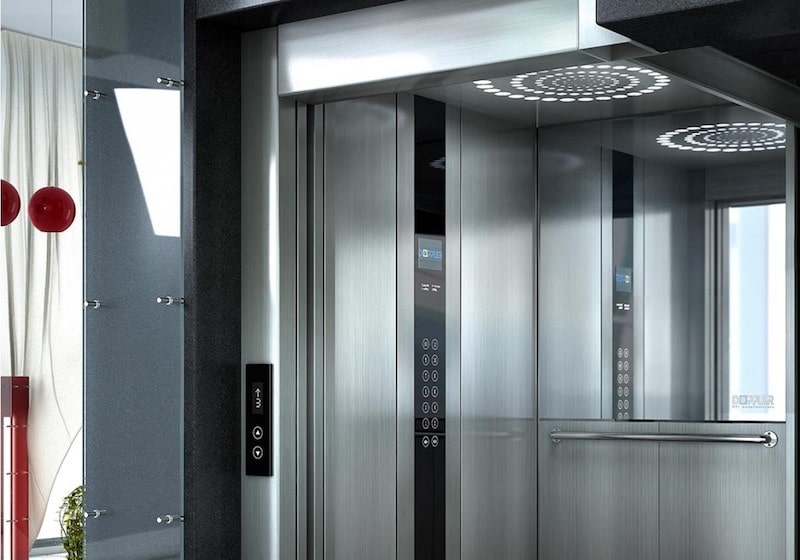We Maintain Lifts to the Greatest Standards: Reliable Service for All Lift Types
We Maintain Lifts to the Greatest Standards: Reliable Service for All Lift Types
Blog Article
Exploring the World of Lifts: Common Problems Dealt With by Various Lift Mechanisms
As we browse via the vertical transportation systems of modern buildings, lifts stand out as a crucial part of our day-to-day lives. From hydraulic lifts to traction systems and machine-room-less layouts, each lift kind comes with its set of typical concerns.
Hydraulic Elevators
Hydraulic lifts, typically liked for low-rise buildings, make use of fluid stress to control the movement of the elevator car (lift repair companies). This device entails a hydraulic pump pushing oil right into a cyndrical tube, causing the elevator to relocate the preferred direction. While hydraulic lifts are understood for their smooth and silent operation, they do come with their own set of typical issues
One prevalent trouble with hydraulic lifts is oil leak. Furthermore, problems with the control system, such as defective shutoffs or a malfunctioning pump, can create disturbances in the lift's motion.
Regular maintenance and prompt repairs are important to guarantee the smooth functioning of hydraulic elevators. By dealing with these common concerns proactively, structure owners can minimize downtime and ensure the safety and security and performance of their vertical transportation system.
Grip Elevators
When taking into consideration upright transportation systems in buildings, an additional typical type other than hydraulic elevators is the grip lift. Traction lifts operate using a system of ropes and weights that relocate the elevator cars and truck by grasping onto the hoist ropes. This mechanism enables smoother and much faster vertical transport compared to hydraulic systems.
Among the typical issues dealt with by traction lifts is rope wear. The continuous activity of the ropes within the traction system can bring about deterioration gradually, possibly creating the lift to breakdown or become unsafe for use. Normal inspections and upkeep of the ropes are necessary to ensure the lift's proper functioning and safety and security.
Another problem that traction elevators might experience is connected to the control system. Problems with the control system can cause concerns such as erratic motion, hold-ups in reaction times, or also total closures. Normal testing and upkeep of the control system are critical to stop such concerns and guarantee the lift's integrity.
Machine-Room-Less (MRL) Elevators

One of the essential components of MRL lifts is the small gearless grip maker that is installed within the hoistway. This browse around this site equipment effectively drives the elevator vehicle without the need for large equipment found in standard traction lifts. Additionally, MRL lifts generally make use of a weight system to stabilize the automobile, further improving their energy effectiveness.
Despite their advantages, MRL lifts might deal with obstacles connected to upkeep and fixing due to the restricted room for devices setup. Access for servicing components within the shaft can be limited, needing specialized training for technicians. Appropriate upkeep timetables and normal evaluations are vital to make certain the ongoing smooth operation of MRL elevators.
Overloading and Weight Limit Issues
Are elevators furnished to deal with excess weight tons effectively and securely? Straining and weight restriction concerns are critical concerns in elevator procedures. Lift manufacturers design lifts with specific weight capacities to guarantee passenger safety and tools long life. Going beyond these weight restrictions can bring about numerous troubles, consisting of mechanical failings, delays, and security dangers.
When lifts are overwhelmed, it places extreme stress on the motor, cable televisions, and other parts, possibly causing failures or malfunctions. Security mechanisms such as sensing units and overload sensors are in area to stop elevators from relocating if they find excess weight. In addition, going beyond weight restrictions can result in raised energy intake and deterioration on the elevator system.
To alleviate overloading issues, developing managers need to prominently present weight limits in lifts and educate passengers on the significance of sticking to these restrictions - lift repair companies. Normal maintenance checks by qualified technicians can likewise aid guarantee that lifts are running within risk-free weight parameters. By attending to overloading and weight limit problems proactively, structure proprietors can enhance lift safety and security and effectiveness
Electric System Failings
Exceeding weight limitations in lifts can not only lead to mechanical concerns yet also potentially contribute to electric system failings within the lift framework. Electric system failures are a vital worry in elevator operation, as they can cause unanticipated closures, breakdowns, or even safety and security threats.
In addition, power rises or changes in the electrical supply can also interfere with the lift's operation, affecting its performance and safety and security. These electric disturbances can damage delicate lift components such as control board, motherboard, or sensing units, causing system failures. Regular upkeep and assessments are vital to determine and address possible electrical issues promptly, making certain the reliable and risk-free operation of lift systems. By sticking to weight restrictions and carrying out regular electrical system checks, building proprietors can mitigate the threat of electrical failings in elevators.
Final Thought

Hydraulic elevators, often favored for low-rise buildings, make use of fluid pressure to regulate the movement of the lift automobile.When considering vertical transport systems in buildings, an additional typical kind aside from hydraulic lifts is the traction elevator. Grip elevators run using a system of ropes and weights that move the elevator auto by grasping onto the hoist ropes. Unlike typical elevators that call for a separate maker room to house the devices, MRL lifts integrate most of the components within the shaft, getting rid of the demand for a specialized equipment room.In conclusion, lifts deal with common problems such as hydraulic breakdowns, grip system failures, and electrical system issues.
Report this page